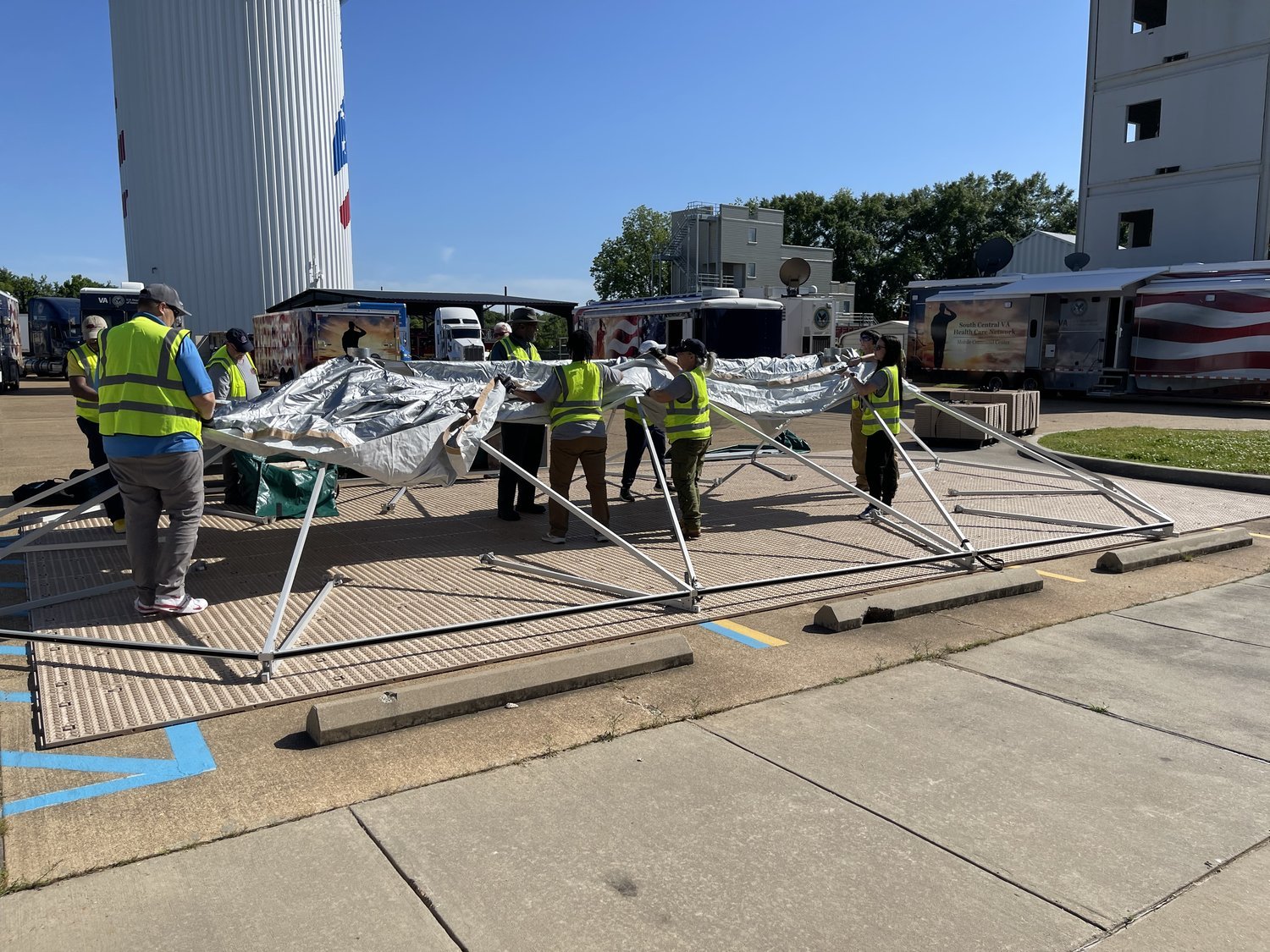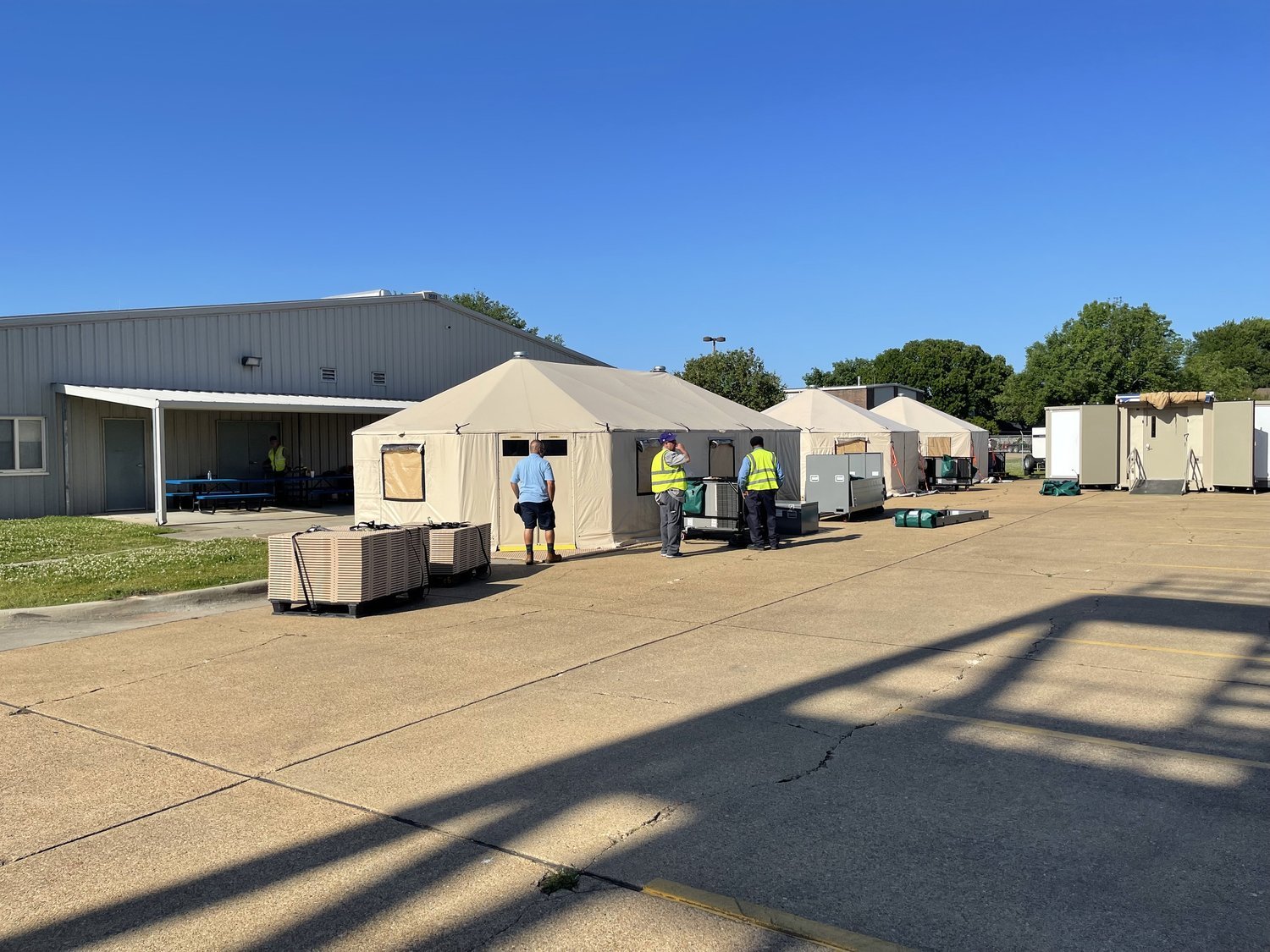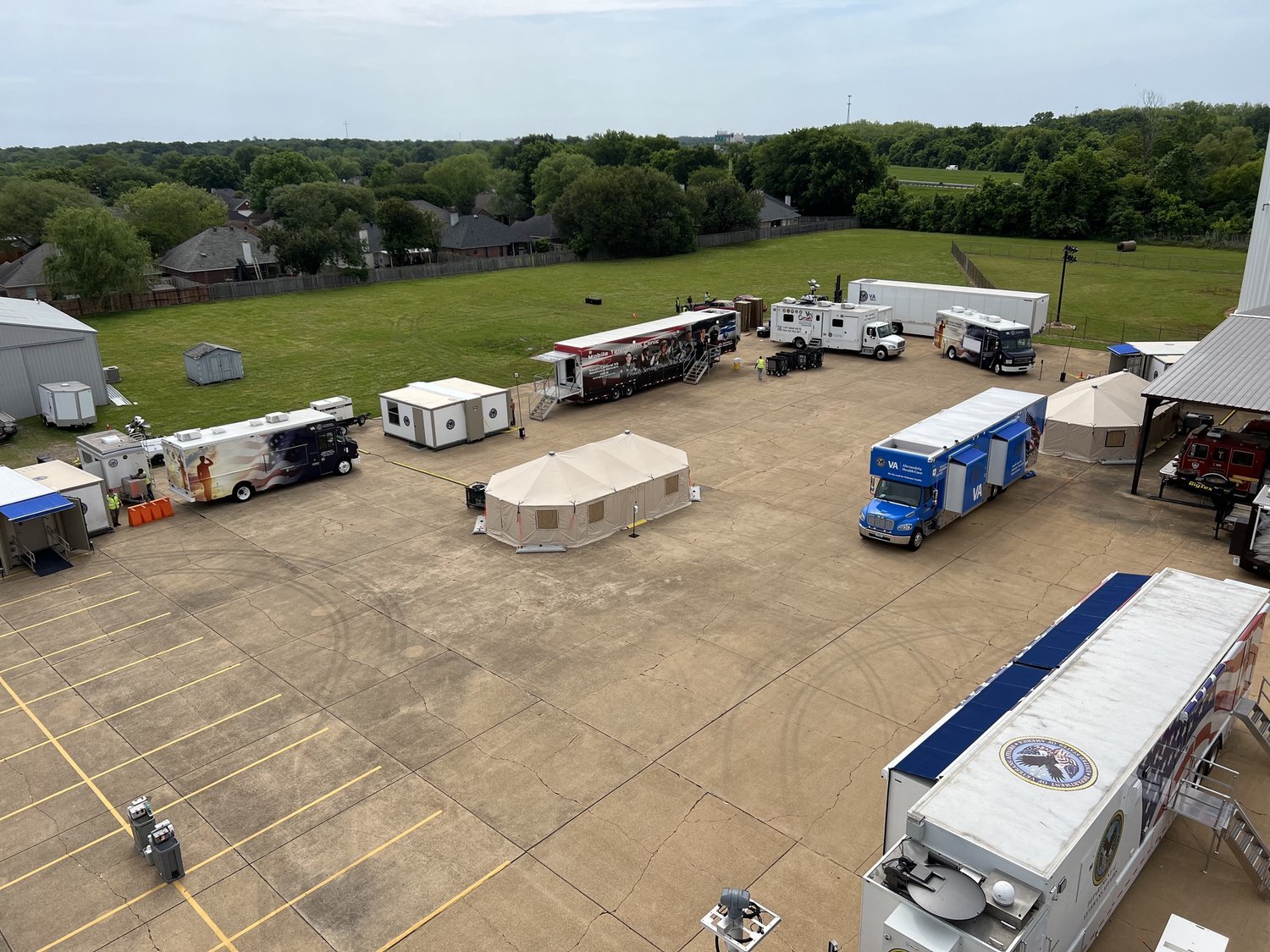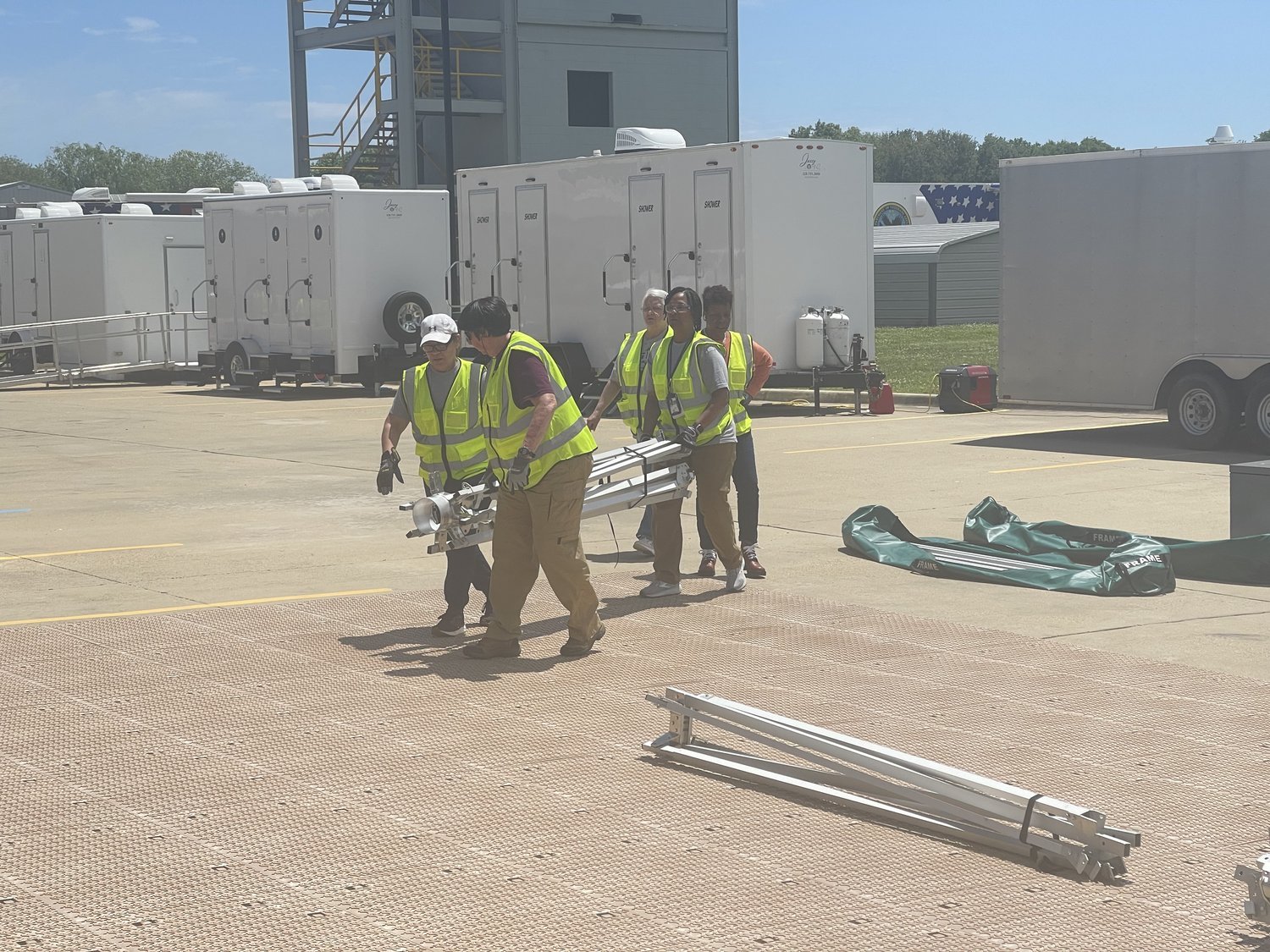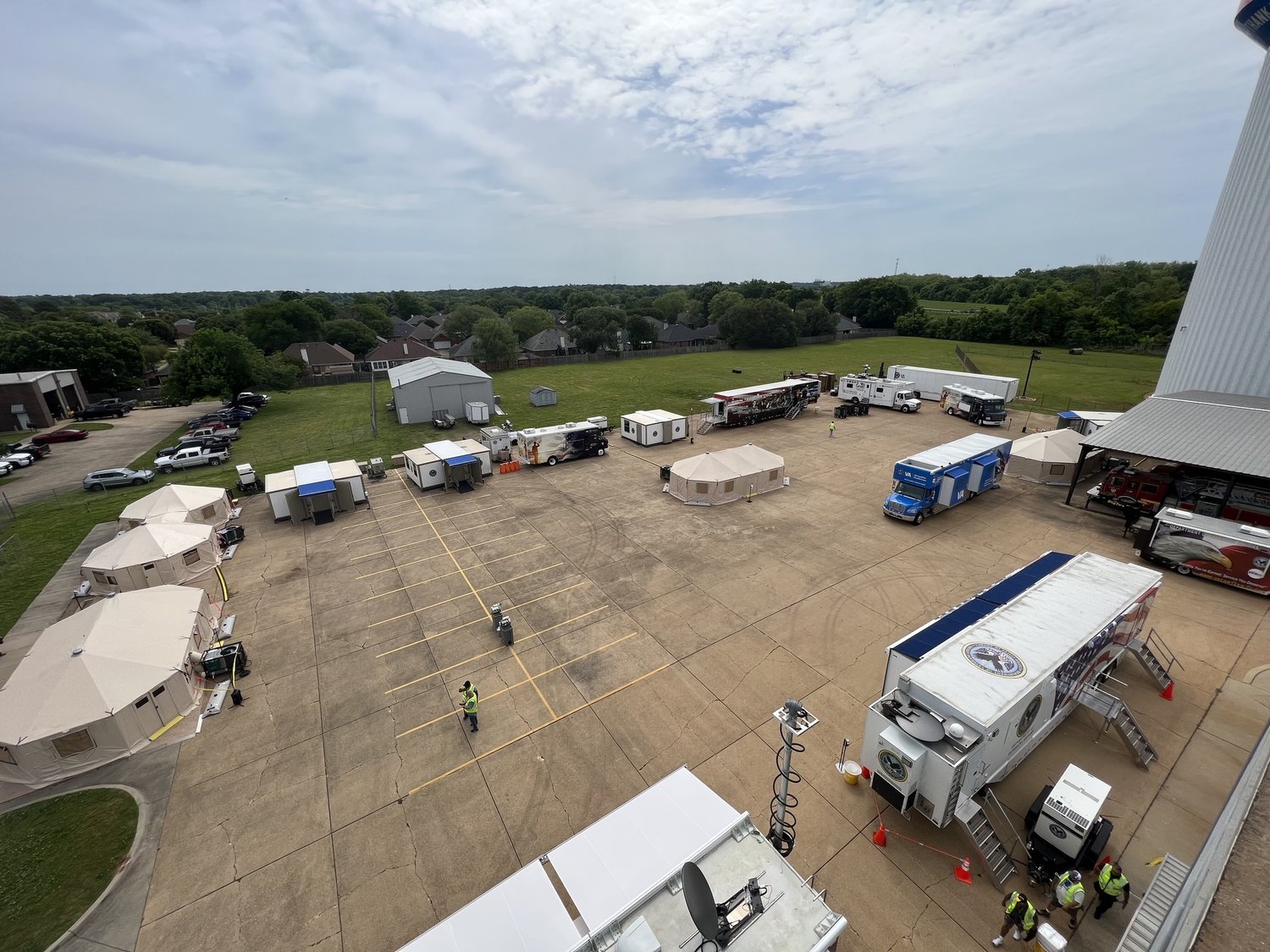Training with VISN 16: Providing Veterans with Disaster Response Solutions
Beneath the shadow of a natural disaster, training acts as the compass to prepare us for the worst of what nature has to offer. Over the years, Western Shelter has provided multiple opportunities for end users to receive training in disaster response solutions. Last month, we traveled down to Bossier City, Louisiana, to provide VISN 16 with training on how to prepare them for hurricane season. What was their training like, and how could it benefit you in the future? Read below to find out!
Who is VISN 16
The South Central VA Health Care Network (VISN 16) is one of 18 Veterans Integrated Service Networks (VISNs) of the Department of Veterans Affairs (VA). VISN 16 serves a population of approximately 1.4 million Veterans, and more than 450,000 Veterans receive care at the eight VAMCs and 61 outpatient sites of care in VISN 16 annually. VISN 16 serves Veterans in Arkansas, Louisiana, Mississippi, and parts of Texas, Missouri, Alabama, Oklahoma, and Florida.
The mission of the Veterans Healthcare System is to serve the needs of America's veterans by providing primary care, specialized care, and related medical and social support services. To accomplish this mission, VHA needs to be a comprehensive, integrated healthcare system that provides excellence in healthcare value, excellence in service as defined by its customers, and excellence in education and research, and needs to be an organization characterized by exceptional accountability.
Preparation for Hurricane Season
The overall goal was to prepare for hurricane season and the response through the VISN 16 network and the VAs in that area. VISN 16 encompasses a large area that quite commonly gets affected by hurricanes every year. Due to this, the necessity to prepare is always high.
Each region has a disaster response team who can come and assist in times of need and assistance. The disasters include more than just hurricanes, but this training, in particular, would focus on hurricanes.
These disaster response teams require high-quality equipment for any of the training exercises and scenarios they prepare for. The equipment includes trucks, sinks, shelter systems, toilets, generators, and everything you need to survive in a disaster environment.
Here is the list of everything VISN 16 focused on deploying during training:
50 + Bed Mobile Isolation Hospital
Western Shelter(s) Set-Up and Capabilities
WEBEOC (Regional Implementation)
New canopy tents (Drive Through Tents)
Alternate Care Site (ACS) Operations and Capabilities
Logistics/Wrap around Services and Contracting during Disasters
Emergency Alerting and Accountability Exercise (EAAS) Notification System
Pharmacy Exercise Providing scripts to local pharmacies, in the field and connecting with the sponsoring hospital
Pharmacy Disaster Training on Pharmacy Cache (The VA SNS Stock)
Telehealth Exercise (Connection to various medical specialties outside the ACS)
Virtual Health Resource Center Exercise (Providing apps and opportunity for remote connection with providers)
Vulnerable Population (Symphony and Vet Text Overview)
Social Work Homeless/Hurricane Prep Virtual
Public Affairs Officer (PAO) Hurricane and Disaster Communication
Physicians and Medical Support during disasters (presented by Dr. Hargus) (Video and Virtual)
Nursing through a state of disaster (Libby Scarbrough)
Mental Health Identifying the unseen impacts of disaster in Veterans and Staff
Clinical Contact Center Exercise (Telephone Transfers)
4th Mission (External VHA missions with other federal agencies, state and local)
GateKeeper Shelters Systems
Western Shelter set up nine shelters for the exercise. Six of them were GateKeeper 1935s, while the other three were GateKeeper 20s. The GateKeeper is our best-selling product for a reason. Since our inception in 1988, the GateKeeper has housed emergency service personnel, protecting them from the harshest environments imaginable. Our end users love the durability and stability of the shelter to survive multiple strike cycles season after season.
The GK1935 is the perfect size for a variety of uses. However, we do offer three other variations that you can view here. In particular, the GK1935 only takes four people to deploy in 35 minutes. It’s the optimal way to get your base camp up and running fast and efficiently. This is why the GK series is a common shelter system of choice when it comes to fire camps around the United States.
A key component we wanted to add to the shelter is that it doesn’t take any tools to deploy. That includes no ladders either. Doing this simplifies the process and adds a sense of safety to the deployment.
Response in Disaster Training
The training took place over three days. The first day involved teaching the staff how to set everything up. The day consisted of a safety briefing on how to stay safe while deploying the shelters and tips and tricks on making the deployment easier.
Deployment was a little slower on this day as we wanted to focus on teaching the fundamentals of deploying and setting up our shelters.
On the second day, the volunteers took the reins for themselves. VISN 16 set up the shelter themselves under the supervision of Western Shelter sales personnel to help them if needed.
The final day is when VISN 16 deployed the shelters all on their own, using what they had learned from the previous two days. By the end, all nine of the GateKeepers were deployed and ready to run the necessary exercises for the training.
Doing the training like this allowed everyone to progress with the details and learn at a pace that allows them to comprehend everything for the upcoming hurricane season and the seasons to come.
The following two days after the training focused on showcasing the equipment and what they could do to accomplish them. Participation went up to just under 200 people for the exercise, so the overall turnout proved to be a big success for the event.
Partnering with VISN 16
We want VISN 16 to know that we are there for them when they need it. We wanted to support them in both the training and the product and even in the disaster situation, and that’s been a valuable thing. We’ve always wanted to be involved with what they’re doing and support them in training so that part of their deployment is easier to manage.
These individuals are going into the worst situations imaginable, and whatever we can do to support them in our operations is something we want to assist in and be a part of. It’s already a high-stress situation, so we want to make it fluid knowledge that they can set up our shelters without thinking about it too much.
Meaningful Disaster Relief
Doing training like this comes with many benefits, and this includes even the people supervising the training. Nathan Neckels, Western Shelter’s Vice President of Sales – Emergency Services, enjoyed the training and appreciated what VISN 16 was doing for the community.
“The biggest thing I took out of it is the meaningful work that comes from the VA side of things. The number of people that were volunteering their time to come to do this so that they could help other members of the community, that was the biggest thing. With a lot of our customers that respond to natural disasters, they are primarily volunteers, and they’re doing it out of the goodness of their hearts. It’s great to be able to support that kind of customer base.”
Why Training Is Important
Hurricanes and other disasters are dangerous situations, so being as prepared as possible when the time comes will not only make operations easier but can save lives in the process. There are many techniques we can teach you to deploy shelters easier and efficiently than watching a video or reading a manual.
There are real-world tips and tricks that can make things a lot easier. Whether you want us to come and teach you these tips and tricks or book a visit at Western Shelter HQ, we can teach you how to prepare for a disaster situation.
A Moment to Remember
We love it when we see the progression of end users when they first learn how to deploy our shelter systems all the way to having them be able to do it on their own. It’s a fantastic process and one we don’t get tired of seeing. However, there was something even more spectacular to happen while the training was going on.
Many of the people a part of it couldn’t help but marvel at the B-52 Stratofortress flyover that occurred throughout the day. It was touch-and-go training, with it being the perfect capstone to a successful event.
Book a Training Session
You can read about our shelter systems and accessories, but there is no better way to learn how to use them than by having hands-on training with them. To learn more about what Western Shelter can do for you or to book a training session with one of our sales representatives, contact us at sales@westernshelter.com or call 541-344-7267. We’ll be happy to help you accomplish your protective needs. Whatever your mission and whatever your challenge, Western Shelter will get you to complete mission-critical success.

